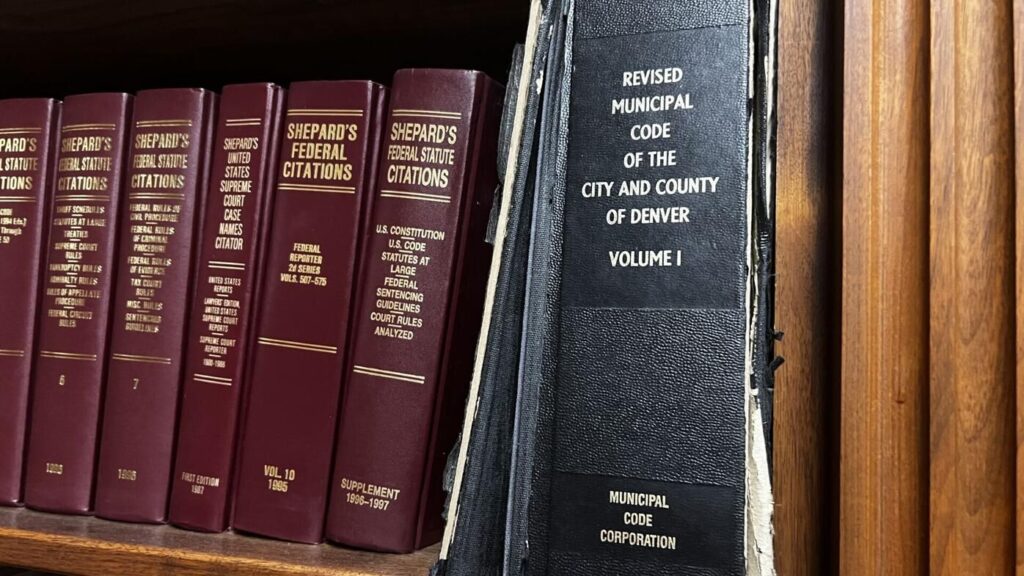Killing of Jeffco sheriff’s dog prompts legislation with harsher penalties

Marianne Goodland marianne.goodland@coloradopolitics.com
Graffit was a 10-year old German Shepherd and a valued K-9 member of the Jefferson County Sheriff’s department since 2015.
On Feb. 13 of this year, he was called in to help Golden Police apprehend Eduardo Armando Romero, 29, at the Colorado School of Mines campus. Romero allegedly shot and killed Graffit during that incident.
Among Romero’s charges is aggravated cruelty to animals, which can be charged as a class 6 felony, the lowest-level felony, and which carries a fine of up to 18 months in jail and a fine of up to $100,000.
Deputies escorted Graffit’s body, draped with a flag, to Colorado State University for a necropsy, in which it was determined that a bullet from Romero’s gun caused the dog’s death.
Colorado law regarding aggravated cruelty to animals doesn’t take into account when the animal is a police dog or horse, specially trained to assist in police duties. That’s about to change.
House Majority Leader Monica Duran, D-Wheat Ridge and Rep. Ryan Armagost, R-Berthoud, are teaming up on House Bill 1286, which would ramp up the penalties for aggravated cruelty to animals when that animal is a service animal, police dog or police horse.
Under the bill, a first-time charge of aggravated cruelty to animals would change to a class 5 felony when the covered animal is tortured, mutilated or killed, whether in the line of duty or not. That’s up to three years in state prison and up to $100,000 in fines.
Romero is facing 21 charges related to the Feb. 13 incident, in which he was found in possession of an allegedly stolen vehicle and under the influence of alcohol. He is currently being held in the Jefferson County jail. No information is available on a hearing date.
The Jefferson County Sheriff’s department was unavailable for comment on the bill. However, in a statement issued in February, the department said: “Graffit has loyally served the JCSO since 2015. He was trained in narcotics detection and patrol functions such as tracking and apprehension. He was a very hard working canine that, according to his previous handler, ‘always gave 110%.’ Today, he gave his life to protect the lives of his handler and the other officers on scene. We’ve always known Graffit was brave and now we know he is a hero. RIP Good Boy. We sure will miss you.”
While the killing of Graffit in February is part of the impetus for the bill, police dog killings are a growing problem, according to Armagost. One website claims 16 K-9 dogs are killed annually. Pennsylvania’s “Rocco’s Law” makes it a class two felony to kill a police dog, with a sentence of 10 years in prison. In Utah, the class two felony for killing a police dog can earn up to 15 years in prison.
In Kentucky, the cost of training a K-9 can exceed the cost for a police car, according to one estimate.
Armagost told Colorado Politics he spent eight years training police dogs for patrol and suspect apprehension when he was a deputy sheriff in Larimer County.
Many states are or already have increased the penalties for killing a K-9, Armagost said.
“We’re upping the penalty so it’s not just an animal cruelty charge,” he said.
Working canine officers are very different from other working dogs or pets, he explained. It’s not just the financial value of the training itself, it’s also the time and training involved. For the agency where the dog is employed, it’s a “huge force multiplier.” Sending the dog in on those dangerous situations is what the dog wants to do, to protect its people, he said.
That doesn’t mean the dog is “cannon fodder,” he added; they aren’t sent in to be killed, they’re sent in to apprehend suspects. The K-9 is is not just a law enforcement officer’s partner, they’re often also the family pet because they live with their human partner.
“It’s something Colorado definitely needs to take on,” Armagost said. “Those people are a danger to society and [when they kill a K-9 unit] they need to have a higher charge.”
House Bill 1286 is assigned to the House Judiciary Committee and is scheduled for its first hearing on April 18.
















